Whether you’re planning an outdoor entertaining area or want to improve the one you have, a covered pergola could be the missing ingredient that creates a versatile space you can use no matter what the weather’s doing. These inspiring options will have you transforming your own outdoor room before you know it.
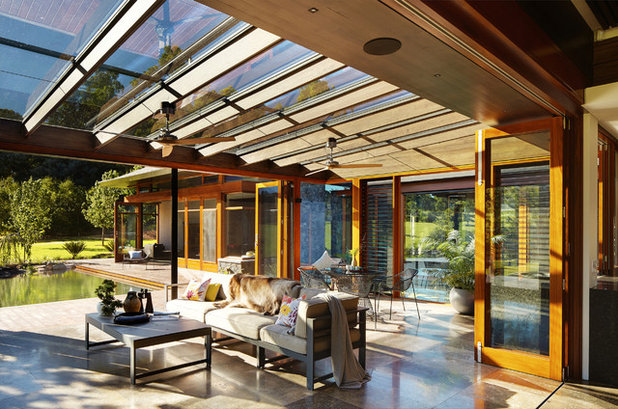
Suzanne Hunt Architect
Transparent. Indoor-outdoor living is what many of us aspire to, but it pays to consider the seasons when you’re designing a covered outdoor area. This glass-covered pergola attached to a home in Perth, Australia, lets the sunshine flood in when needed, but it also gives the homeowners the chance to keep sweltering temperatures at bay. Remote-controlled retractable awnings above the glass are the solution to the intense heat, and overhead fans keep the air moving.
Learn more about this house
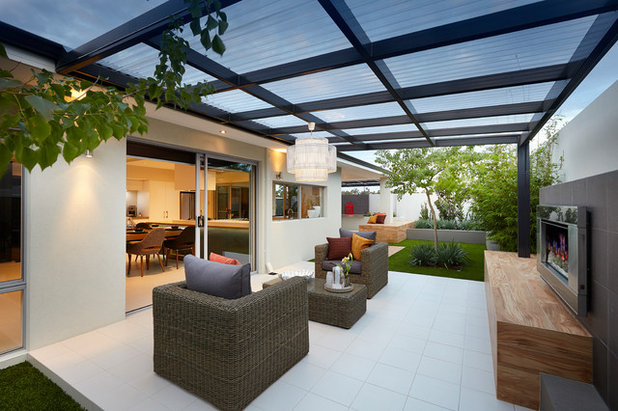
Ventura Homes
A simple and relatively inexpensive roofing option is transparent Colorbond. Pair it with a black wood frame for a contemporary look, or opt for a tinted version if you want to keep out those harsh summer rays.
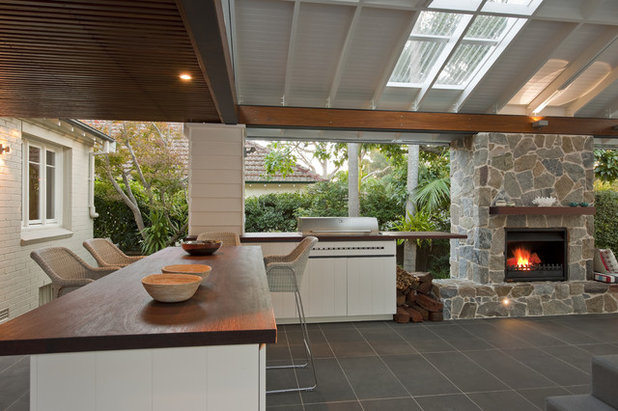
Michelle Walker architects
Wood paneling. If shade is what you need to make your outdoor zone more usable, a wood-lined pergola could be the way to go. Consider incorporating a couple of panels of clear, corrugated roofing to let some light in.
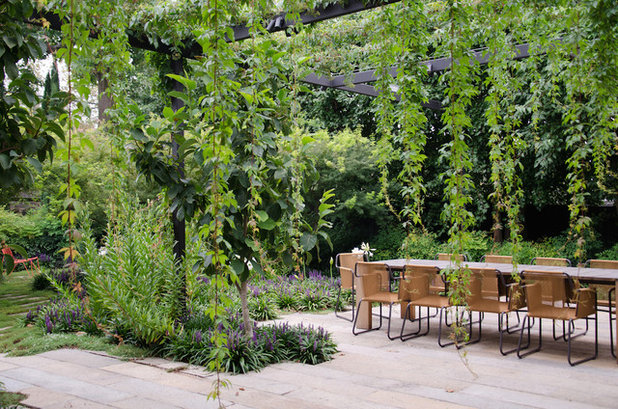
Eckersley Garden Architecture
Plant cover. If you’re looking for shade but aren’t too worried about protecting your outdoor area from the rain, covering your pergola with vegetation could be an appealing option. For cool climates, building designer Paul Caracoglia of The Drafting Studio suggests planting deciduous vines on a wood pergola. Wisteria, for example, opens the area to the sun in winter but keeps it cool and shady in summer.
“Fruitless grape vines are great too,” Caracoglia says. “A fruitless variety means there’s no mess from fruit dropping or from birds feeding on the fruit.”
Tip: Outdoor furniture covers are a budget-friendly alternative for protecting your furniture from the elements.
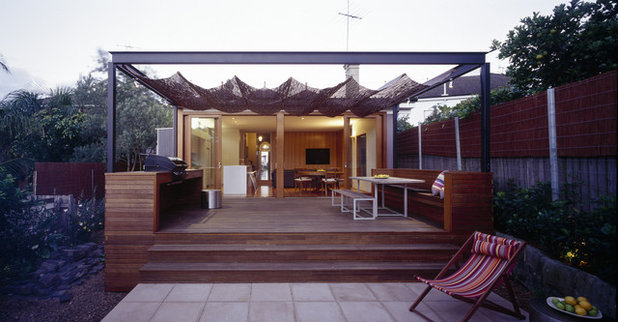
Sam Crawford Architects
Alternatively, bamboo shading adds a textural element to a casual outdoor living area and can deliver the shade you’re looking for without busting the budget.
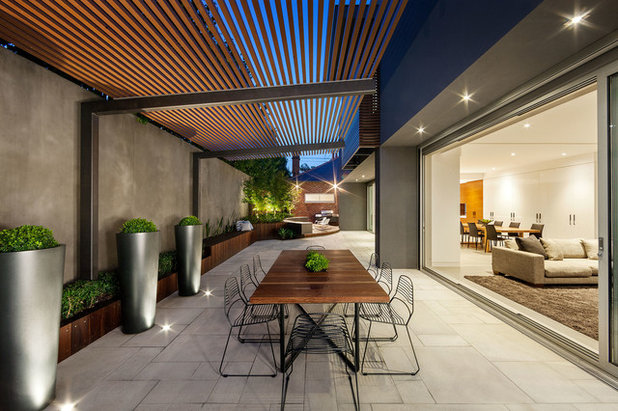
DDB Design Development & Building
Slats. Wood slats won’t keep out the rain, but if shade is your goal, they’re a stylish option to consider. The wood dining table and planter boxes in this Melbourne, Australia, home’s outdoor entertaining area bring the look together.
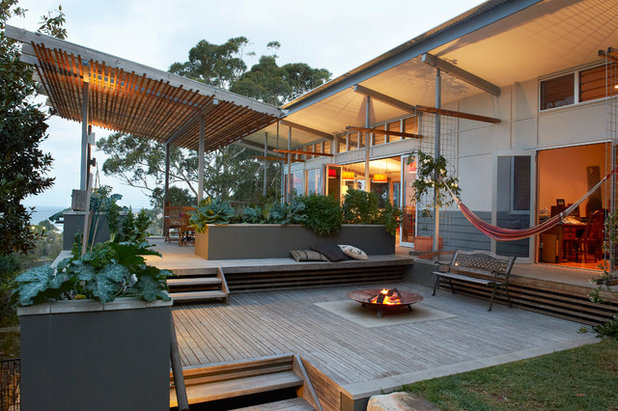
True North Architects
Wood slats can add a decorative element, particularly useful if you’re trying to disguise a cheap roofing material. The architects of this beachside home designed a series of interconnected decks, terraces and gardens to provide a variety of outdoor spaces for the homeowners to enjoy.
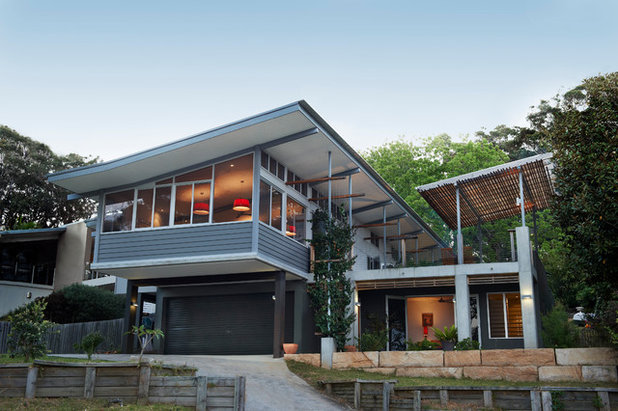
True North Architects
Tip: Think creatively when it comes to the design of your pergola. This one follows the line of the home’s roof to fit in. Unlike with additions, which are often designed to contrast dramatically with the original house, Caracoglia suggests matching a pergola to the style of the home.
“I would try to match the pergola to the theme of the house,” he says. “I’d look at what’s already there so it doesn’t stand out.”
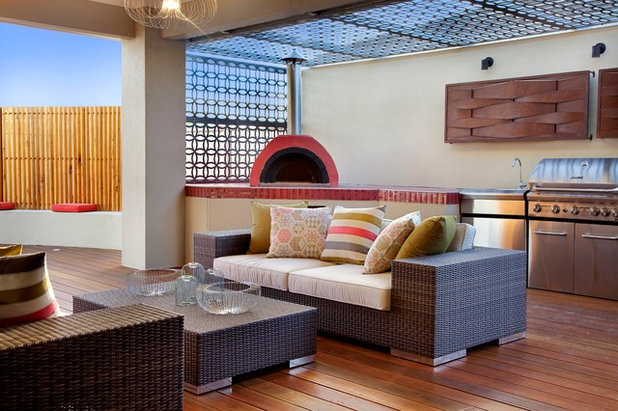
Landscape And Architectural Design Products PL
Metal. Laser-cut screens add a contemporary look to outdoor areas, and are favored by architect Dominic Bagnato because they provide shade and privacy without blocking too much light. Metal cladding is another option, Bagnato says. “Copper or zinc is the way to go if you are trying to show it off,” he adds.
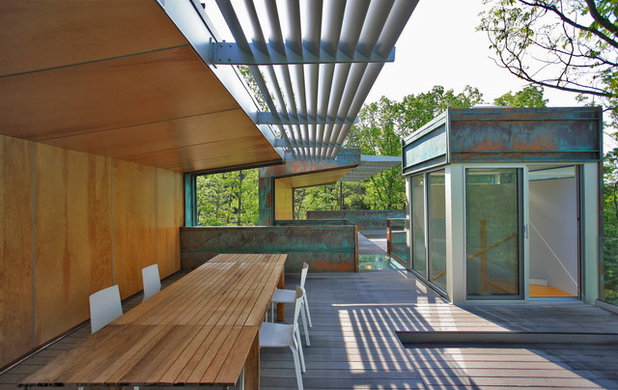
Travis Price Architects
Carefully angled metal louvers can be a smart choice for an outdoor dining area if keeping the western sun at bay in the afternoons is a priority.
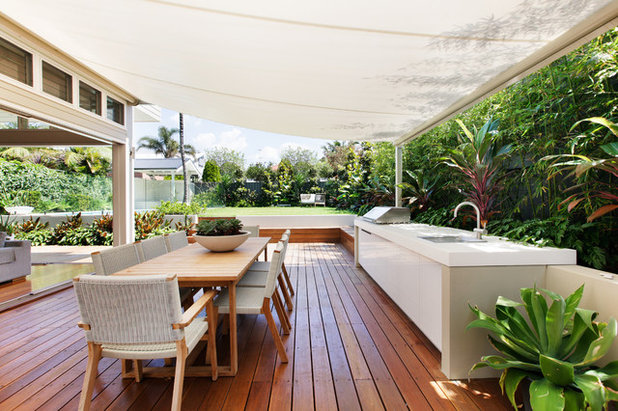
Bawtree Design | Architecture + Interiors
Awnings and shades. A waterproof awning by Outrigger Awnings and Sails makes this outdoor area cool and comfortable without making the space dark.
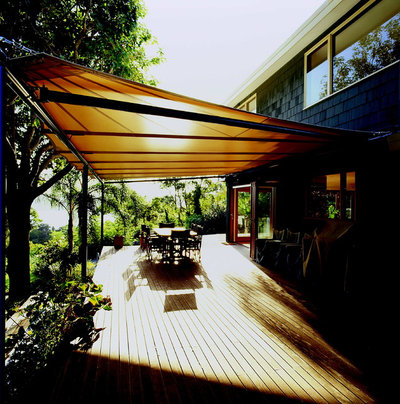
Outrigger Awnings and Sails, Sydney
The rainproof shade protecting this home in Sydney gives the deck area an upscale look while also helping to keep the home’s interior cool. Well-designed, sturdily built shades and awnings can be just as durable as other pergola materials.
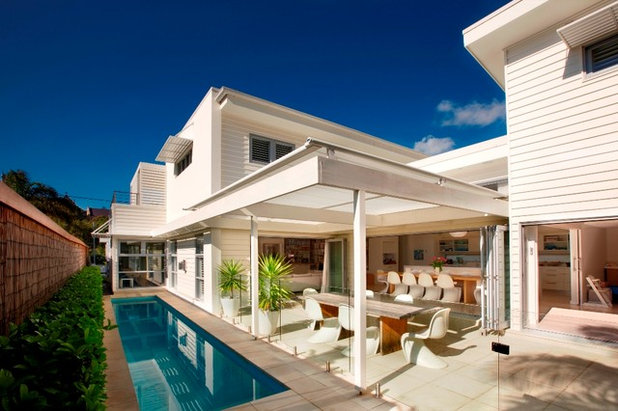
Sanctum Design
A sturdy awning like this one can cope with all kinds of weather, so you don’t have to panic if the wind kicks up and you’ve forgotten to retract it.
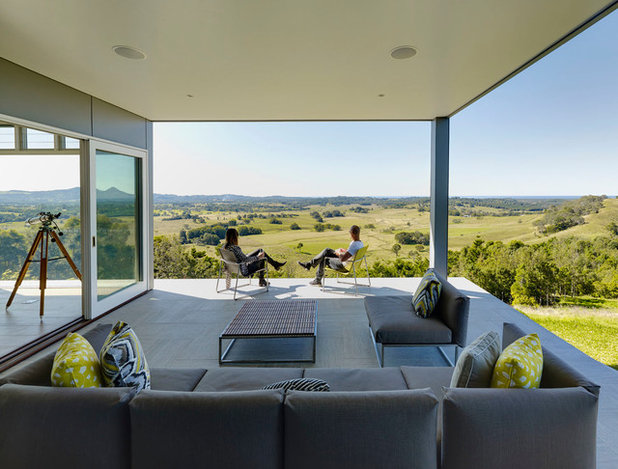
zaher architects
Lined. Insulated roofing can create a seamless effect between indoor and outdoor areas and can keep a deck or pergola far cooler than other covering materials. Lined ceilings can also be handy when it comes to installing lighting and overhead fans — there will be no electrical wires in sight.
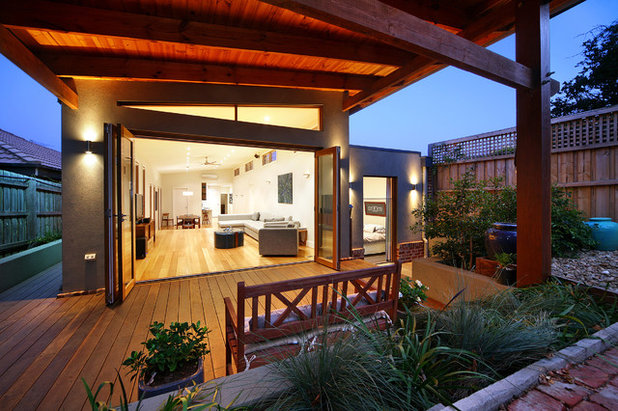
Brent Builders
Lining pergolas with unpainted wood can add beauty along with protection from the elements. A lofty pergola that allows plenty of airflow and light will prevent it from feeling too dark or enclosed.
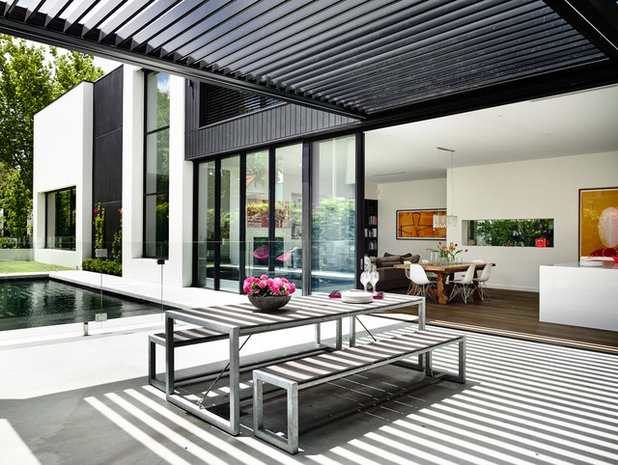
amber hope design
Louvers. Louvered pergolas allow you to control the light at will. With the flick of a switch you can close the louvers completely if you and your guests are caught in a downpour in the middle of lunch.
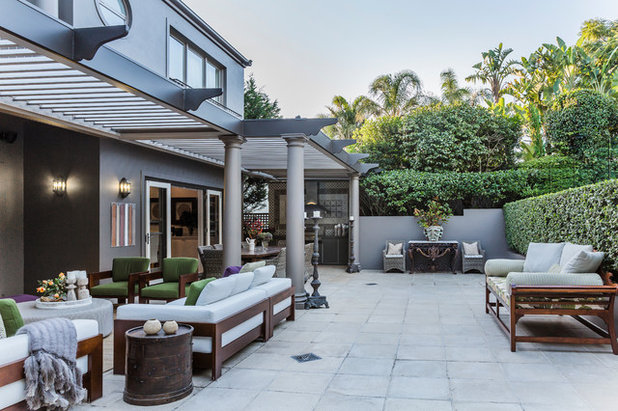
Marylou Sobel Interior Design
Louvered pergolas can work on traditional homes as well as other styles.
See more of this entertaining area
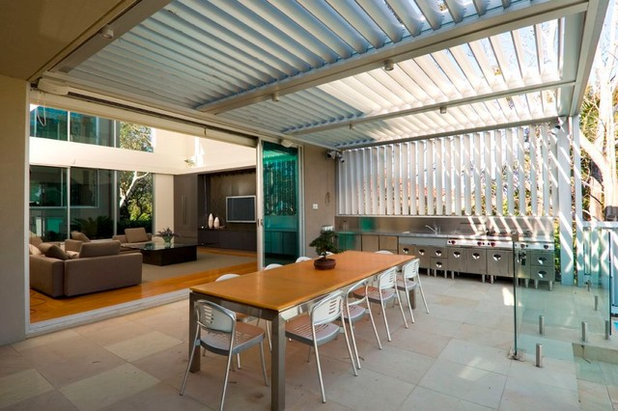
Vergola NSW
Louvers are also handy when it comes to cross-ventilation. Open them up to cool things down and close them when you need protection from the wind.
Tell us: How protected is your pergola? Tell us about it and share your photos in the Comments.





